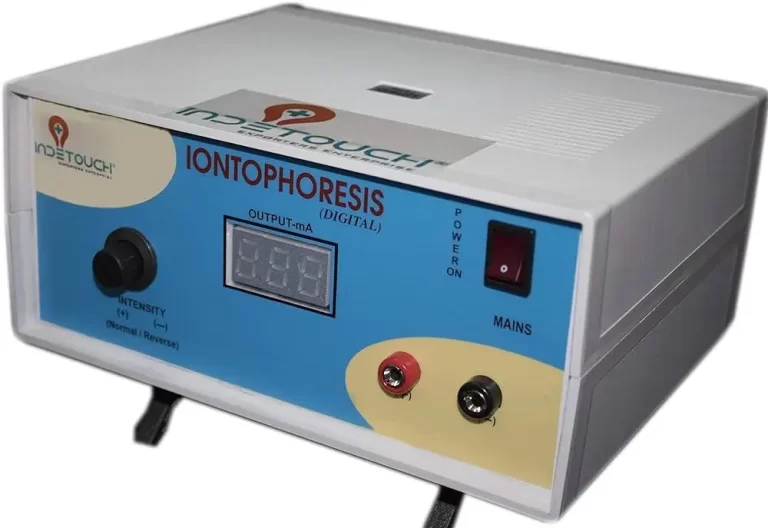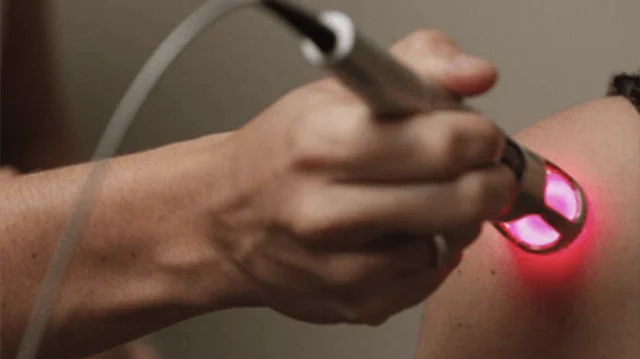Paraffin Wax Bath Therapy
What is Wax Bath Therapy?
Wax bath therapy is a type of deep heat therapy that involves heating connective soft tissues, making it one of the most effective methods for improving mobility.
Wax bath therapy often uses paraffin oil and wax to relieve pain in the hands, joints, feet, and muscles. The wax’s specific temperature ranges from 42 to 52°C, with a melting point of 51 to 54.4°C. Melted wax should not be applied directly to the body part since it may cause burns. To escape this, wax’s melting point is often decreased by introducing a contaminant called paraffin oil.
Wax bath therapy involves administering melted wax to the affected area, which induces muscle relaxation and improves joint flexibility. it is mostly used to treat sore feet and hands. It is used in conjunction with standard mobilization methods and customized workout routines to get beneficial results.
What is a Wax Bath Unit?
The paraffin wax’s temperature ranges from 42 to 52°C, and its melting point is 51 to 55°C. When molten wax at 51-55°C is sprayed on bodily tissue, it may have a thermal effect (burn), so a contaminant such as mineral oil, liquid paraffin, or petroleum jelly is added to reduce the melting point.
The combination of paraffin and mineral oil has a lower characteristic heat, which boosts a patient’s ability to bear heat from the paraffin wax more gracefully than from water at the same temperature.
The proportions of solid wax, liquid paraffin, and petroleum jelly are 2:1:1.The ideal ratio of paraffin wax to mineral oil is 7:1/6:1.
Conduction is the process by which warmth is transmitted from paraffin to a patient’s skin.
Parts of wax bath unit:
The wax bath unit consists of enameled bathtubs, stainless steel, and fiberglass shells.
The jar contains wax and paraffin oil at the prescribed ratio.
The thermostat maintains the temperature set using a knob.
The thermostat pilot’s lamp indicates whether the thermostat is on or off.
The power pilot’s lamp indicates if the power is on or off.
The lid cover container and caster make it easy to move the wax bath container from one location to another.
How does Wax Bath Therapy work?
You will need a paraffin wax bath, mittens, and around 1 kilogram (2lb) of paraffin wax. If the paraffin wax is properly cared for, it may be reused for nearly two years or more. You’ll need a paraffin wax bath with a thermostat to manage the heat and prevent overheating. We highly advise you to test a tiny area on the inside of your wrist before fully immersing your hands or feet.
Molten paraffin wax is applied in layers to the skin to build it up. The wax begins to harden when it comes into touch with the air outside of the wax bath. The wax is subsequently removed painlessly, leaving the area available for massage therapy, activity, stretching out, or other therapeutic operations.
Application of Wax Bath Therapy:
- Melt the wax using a paraffin wax bath. At this time, you should avoid submerging your hands or feet in wax.
- Once the wax has melted to the correct temperature according to the thermostat, allow it to cool somewhat.
- Thoroughly clean your hands or feet before applying the wax.
- Before fully submerging your hands or feet, test a tiny area on the inside of your wrist and make sure the temperature is appropriate for you.
- Dip your hands or feet in the wax, then remove them entirely. Allow the wax to start hardening. Re-dip for a few seconds and remove again. Before dipping, separate the fingers or toes so that the wax may coat them completely.
- Repeat until there are four or five layers. Then, swiftly wrap the hand in any of the following: You can use a plastic liner, foil, greaseproof paper, or a roasting bag. When they’re in place, insert your hand or foot inside the gloves or wrap an old towel over it.
- Allow the gloves or towel to rest for around 20-30 minutes
- Remove the wax and shape it into a ball with your fingers, gripping and releasing it before returning it to the pan for later use.
- Moisturize your hands and feet with emollients or moisturizers.
- After the treatment, exercise the joints for at least ten minutes.
- Make sure the wax temperature is not higher than 51 degrees centigrade before you begin your treatment.
Method of Application:
Paraffin wax can be applied using many methods, including:
- Dip technique
- Immersion Method
- Brush technique
- The Bandage Method
- Pouring Method
Dip technique
The therapist will tell the patient to immerse his or her extremities in the paraffin wax bath (PWB). Remove the extremities once the paraffin has solidified or thickened and covered the skin. Dipping should be repeated 8-12 times until a thick layer develops. Once a thick layer of wax has developed, wrap the treated area in plastic first, followed by a towel. This type of paraffin wax bath (PWB) encourages gentle heating. The therapy should last 10-15 minutes.
Immersion Method
In this immersion approach, the therapist instructs the patient to dip his or her extremities in a paraffin wax bath at least 3 to 4 times until a thick coating develops. This paraffin wax bath (PWB) technique enables strong heating of the afflicted extremity.
Brush technique
In this procedure, the therapist uses a paintbrush to apply 8-10 coats of wax to the affected body region in equal and fast strokes. Once a thick wax coating has developed, wrap the treated area in plastic first, then in a towel for 10-20 minutes. This type of paraffin wax bath (PWB) is more widely employed.
The Bandage Method
In this procedure, the therapist uses a cloth or bandages of appropriate size, it will be dipped in paraffin wax and then wrapped around the treating area. Extra wax can then be poured or brushed into the bandage. This approach is widely utilized to treat proximal areas of the body.
Pouring Method
In this procedure, the therapist will use a mug or spoon to directly pour wax over the area to be treated. Wax should be poured a maximum of 7 to 10 times to build a thick layer, and then covered with plastic and wrapped in a towel. Treatment lasts 10-15 minutes. This approach will be widely utilized for knees and elbows.
Advantages of using Wax Bath Therapy:
Paraffin wax bath therapy has potential medicinal use. Some salons and spas use it to soften skin or relieve discomfort in joints and muscles.
Paraffin wax bath therapy has two major benefits: it moisturizes or softens the skin, and it may be used in heat treatment.
Moisturising
Paraffin wax bath therapy is commonly used in skin-softening treatments in spas and salons to moisturize hands, feet, and cuticles. Paraffin is an occlusive moisturizer, which means it forms a physical barrier on the skin to prevent moisture loss. This may leave a person’s skin feeling silky and smooth.
Occlusive materials, such as paraffin wax, can also assist in alleviating the symptoms of dry skin diseases such as atopic dermatitis. However, occlusive moisturizers may leave the skin feeling oily. The thick barrier on the skin may also cause blocked pores and acne.
Heat therapy
Paraffin wax bath therapy can be used for heat treatment on the hands and feet.
To use it for heat treatment, just melt the wax, test the temperature, and immerse your hands or feet in it. This may help ease tight muscles and joints by boosting circulation and increasing blood flow to the affected region.
People with various types of arthritis may find that this form of heat treatment alleviates pain, stiffness, and swelling while also increasing mobility and flexibility.
- Suitable for patients with weak heat tolerance, dry, scaly skin, and after plaster of Paris removal.
- Can be followed by therapeutic exercises.
- Can be done at home.
- Wax can conform to the bone curves of heat and hands.
- Heat is distributed evenly by conduction.
What are the side effects of Paraffin Wax Bath Therapy?
While wax treatment is typically safe for most individuals, there are some potential adverse effects that you should be aware of:
1: Burns: To avoid burns, the wax should not be applied to the skin while it is too hot.
2: Sensitive reactions: Some people may be sensitive to the chemicals in wax or the additions used in scented variations.
3: Skin irritation: In rare circumstances, wax treatment might irritate or worsen pre-existing skin issues.
What are the results of Paraffin Wax Bath Therapy?
Physiological effects of paraffin Wax bath therapy:
Heat production:
The temperature of treated body parts rises significantly during the first two minutes, reaching 12-13°C.
This decline, during the wax covering, to an expansion of around 8°C after 30 minutes.
The subcutaneous fascia expands by 5°C after the therapy.
In the exterior muscles, there is only roughly a 2-3°C increase in temperature at the end of the therapy.
Circulating effect:
Provocation of superficial capillaries and arterioles causes local hyperemia and reflex vasodilation.
Hyperemia is the result of the skin’s reaction to its function in heat regulation.
After 15-20 minutes, the skin and subcutaneous tissue temperature decreased, resulting in decreased vasodilation.
Exercise after the wax is required to increase blood circulation in muscles and to benefit from the relaxing impact of heat to get an increased range of motion and muscular power.
Analgesic action:
Wax has a profound sedative effect on bodily tissues.
This result is used before exercise in the treatment of superficially positioned joints.
Stretching effect:
Wax has a stretching action, leaving the skin soft, and moist.
This is useful for stretching scars and adhesions before using mobilization treatments.
Clinical Benefits of Paraffin Wax Bath Therapy:
- Relieving Musculoskeletal Pain
- Reducing stiffness
- Increase in the local temperature
- Increase perspiration.
- Increase in local circulation.
What conditions are treated with paraffin wax bath therapy?
Wax bath therapy is a pain-free, soothing, and enjoyable treatment. It alleviates chronic joint pain and relaxes tight muscles. It treats problems like :
- Osteoarthritis.
- Rheumatoid arthritis.
- Fibromyalgia
- Joint Mobility Issues.
- Scleroderma.
- Raynaud’s or other rheumatic symptoms.
How many paraffin wax bath therapy sessions are required?
The number of sessions necessary varies according to the individual’s health and therapeutic goals. Some people may receive a rapid decrease after only one session, while others may need numerous sessions over time to attain the desired results. Your physical therapist can best advise you on the right frequency and length of therapy depending on your unique requirements.
Contraindications for Paraffin Wax Bath Therapy:
- Ischemia.-Example: arterial insufficiency
- Hemorrhage is characterized by increased arterial and capillary blood flow, as well as heat.
- Impaired sensation: A spinal cord damage may lead to burns.
- Inability to convey or respond to pain: for example, dementia.
- malignancy:-may promote tumor development.
- Acute injury or inflammation: Diffusion across the membrane is enhanced.
- Scar tissue:- Elevated temperature raises the tissue’s metabolic requirement; scar tissue has insufficient vascular supply and is unable to generate an effective vascular response when heated, which can result in ischemia necrosis.
- Poor thermal regulation.
Disadvantages of paraffin wax bath therapy:
Paraffin wax therapy, while usually regarded as safe and useful for specific illnesses, has several disadvantages to be aware of:-
Burn risk: Melted wax can be fairly hot, increasing the danger of burns if not handled carefully or if the skin is heat sensitive.
Sensitive Reactions: Some people may be sensitive to the substances in paraffin wax or smells that are used to it, causing skin irritation or allergies.
Messy Application: Applying and removing wax can be messy, necessitating cleanup afterward.
Limited Penetration: While paraffin wax can help moisturize the skin and relax joints, it may not penetrate deeply enough to effectively treat underlying muscle or joint disorders.
Time-Consuming: The procedure of melting the wax, applying it, waiting for it to set, and then removing it might take some time, which may only be convenient for some.
Cost: Purchasing the equipment and wax for frequent usage at home may be expensive, and professional treatments can add up over time.
Not Suitable for Everyone: People with specific medical disorders, such as diabetes, poor circulation, or skin infections, may not be good candidates for paraffin wax therapy due to the possibility of consequences.
Precautions of paraffin wax bath therapy:
Temperature Control: Always test the temperature of the paraffin wax before submerging any body area. The wax should be heated enough to be comfortable but not so hot that it causes burns. Monitor the temperature using a dependable thermometer.
Skin Sensitivity: Before fully immersing in the wax, test a tiny area on your skin, especially if you have sensitive skin or diabetes. Inspect for any unpleasant responses, such as redness, inflammation, or pain.
Hygiene: Keep the paraffin wax bath clean and hygienic. Avoid taking it if you have any open wounds, infections, or skin disorders that the therapy may aggravate.
Moisturise: Before applying the wax, apply a thin layer of moisturizer to the skin. This protects the skin while also increasing the treatment’s advantages.
Proper Application: Follow the directions on the paraffin wax bath equipment. Apply the wax evenly, and avoid leaking or spilling.
Caution with Heat: Exercise caution when handling hot wax to avoid unintentional burns. If necessary, wear adequate protection clothing, such as gloves.
Consultation: If you have any underlying health disorders or concerns, speak with a doctor before utilizing a paraffin wax bath. They can offer recommendations depending on your requirements.
FAQs
Why do physiotherapists use paraffin wax?
The use of paraffin wax in physiotherapy is one of the most efficient strategies to increase joint mobility by heating the connective tissues. It is particularly useful for painful hands and feet, and it is administered by your physiotherapists using a combination of gentle mobilizing techniques and a personalized training regimen.
How is the paraffin wax bath procedure carried out?
Paraffin wax bath temperatures are typically 118°F to 126°F, and the traditional application process is dipping the hand or foot in the paraffin wax 7-12 times to form a wax “glove” before putting the hand in a plastic bag and covering it with towels to help retain the warmth.
What are the five benefits of paraffin wax?
Elasticity Expanding Agent.
Excellent moisturizer.
Reducing muscle swelling.
Skin softening.
The disposal of dead skin.
Why would you use a paraffin bath?
A paraffin wax bath is used to protect the hands and feet with heat wax, which reduces discomfort in joints and body tissues. The heated wax increases blood circulation, relaxes stiff and inflexible muscles, and relieves aches in the aquatic body region.
Is paraffin wax safe for your skin?
Paraffin wax is fully safe and beneficial to the skin and bodily tissue. Because it does not need to be warmed to a high temperature to soften, you may apply it to your skin without fear of being burned. Paraffin wax may be particularly irritating to people with sensitive skin and can cause a heat rash.
References
- Paraffin Wax Bath. (n.d.). Physiopedia. https://www.physio-pedia.com/Paraffin_Wax_Bath
- Paraffin Wax Bath: How to Use on Hands | The Hand Society. (n.d.). https://www.assh.org/handcare/condition/paraffin-wax-bath
- Fletcher, J. (2022, May 25). What to know about paraffin wax treatments. https://www.medicalnewstoday.com/articles/paraffin-wax
- What is Wax Therapy? What conditions are treated by Wax Therapy? Who will benefit from Wax Therapy? (n.d.). Cbphysiotherapy. https://cbphysiotherapy.in/therapies-offered/wax-therapy
- Vaghela, D. (2023, December 13). Wax Bath Therapy – Technique, Effects, Indications, Precautions. Mobile Physiotherapy Clinic. https://mobilephysiotherapyclinic.in/wax-bath-therapy/








One Comment